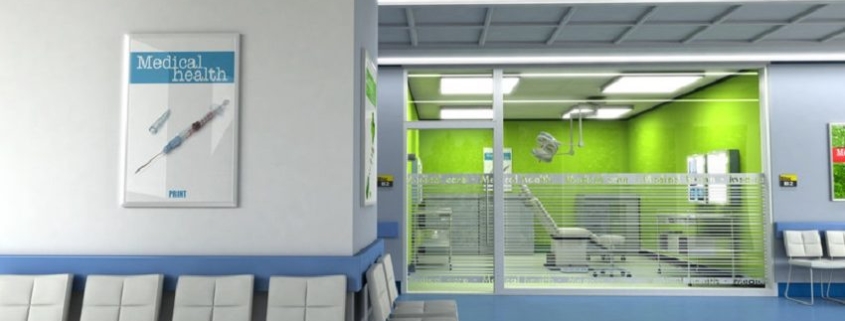It’s a highly competitive environment when it comes to healthcare real estate out West, so say InterFace Conference Group’s Healthcare Real Estate West panelists.
One of the central themes of the day-long conference, which was held March 6 at the Omni Los Angeles and attracted 219 attendees, was the pent-up property demand from investors. However, most panelists agree the opportunities are somewhat limited due to a lack of new product and the long-term holding pattern many healthcare investors have adopted.
“You have all this demand, yet transaction volume is staying flat,” said Darryl Freling, managing principal at MedProperties Realty Advisors and moderator of the 2019 Outlook panel. “Where’s the bottleneck? So much is held by healthcare systems and they’re not letting go because clearly there’s just so much demand.”
Shane Seitz, fellow panelist and senior vice president at CBRE, doesn’t see this level of trading picking up, at least not with the current healthcare supply.
“REITs don’t get incentivized to turn over their product,” Seitz noted. “They buy and hold. They treat it just like the nonprofit health system does. They want to have it forever. We also have foreign and domestic groups coming in. They historically invest in funds, but now they’re saying, ‘You know what, I’m going to buy strategically in this space.’”
Seitz further noted that the level of capital in the healthcare real estate sector was around $6 billion in 2008. It’s now $12 billion.
“It’s that instant capital coming in,” Seitz explained. “Everyone has read the headlines about healthcare and they want to buy.”
This frustration has caused many healthcare players to pivot. After all, what happens when one investment vehicle dries up? You look elsewhere. That’s led to diversification.
“Healthcare real estate has really changed a lot over the past 20 years,” said fellow panelist P.J. Camp, principal and co-founder of H2C. “It used to be it was just medical office buildings of 40,000 to 60,000 square feet, two to three stories, on a health campus. This is not at all the case now. With all the capital flooded into our space, it’s driven the product type to be much more diverse.”
Healthcare real estate, for many, now includes not just hospitals and standard medical office buildings (MOBs), but skilled nursing facilities, satellite buildings, home health services, wellness centers, walk-in clinics, seniors housing, micro hospitals and rehabilitation and long-term care centers.
“I never would have thought of seniors housing and long-term care as the world we play in,” Camp continued. “I don’t know when that changed, but seniors and medical buyers have come together. MOB means so many different things now. It’s confusing the market a little bit. We used to know what an MOB was. Now we have to think of all these different products and uses in terms of long-term viability. It’s a very complicated market today. It used to be so simple.”
Community-Driven
One of the largest motivations for the diversification in uses is the community-driven, patient-facing approach many are taking to healthcare nowadays. Deeni Taylor, fellow panelist and executive vice president and CEO of Physicians Realty Trust, believed this is where the focus should have been all along, meaning this “pivot” is essentially a return to Healthcare 101.
“The successful operation of all these products is dependent on the goal of the healthcare organization,” Taylor said. “If it’s for the patient, the probability of success is much higher. If it’s simply a reimbursement scheme, that real estate play is a disaster. It’s just a matter of time. That’s just not a risk we’re willing to take as a public company.”
Karen Costello, senior program manager at Hoag Hospital and participant on the Hospitals & Systems panel, believes organizations will need to embrace the patient and their care as the industry faces two major hurdles.
“We need to be flexible and develop new places to engage with consumers and we have to create stickiness with them because we have to deal with two tidal waves: the aging demographic and tech distraction,” Costello said. “They’re both coming. The question is what’s going to hit first and will the two clash?”
Panelists note that this creates an interesting conflict, as seniors prefer a more personal approach to healthcare, while the younger generation appreciates technology that prevents them from having to physically visit a doctor’s office.
Convenience-Driven
Unless an organization is in a specific niche, such as seniors housing or wellness and preventative care, companies must accommodate both populations and preferences. One of the easiest ways to do this is through micro hospitals, walk-in clinics and ancillary service providers, such as home healthcare agencies.
“We have a disruption issue,” said Jeff West, Hospitals and Systems panelist and executive director of Irvine, Calif.-based Providence St. Joseph Hospital. “The disruption from within is incremental. The continuum of care keeps marching on. What we really need to get to is healthy populations. That’s keeping people out of the hospital. That now involves delivering doctors and nurses to patients’ homes. That’s a very viable, cost-effective model.”
West also says that outside disruptors, chiefly Amazon, are advancing and revolving their model around artificial intelligence. The e-commerce giant recently joined forces with Berkshire Hathaway and JPMorgan Chase on a healthcare company called Haven. The joint venture’s focus is threefold: better access to health providers, easy-to-understand insurance benefits and affordable prescription drugs. Haven will only be available to employees of the three firms, at least for now. The joint venture has stated it eventually plants to share its findings with others outside its network.
Costello sees this play as one the current healthcare industry will need to respond to — and quickly.
“We need to start looking at healthcare as a lifestyle brand,” Costello said. “All healthcare needs to start reflecting wellness. We need to create ‘easy’ so we can be around when people like Amazon come to market. Healthcare has to be somewhere where people want to be. We’re marching down this brand of consumerism, and consumers want to be in Newport Coast. They want to be at the Irvine Spectrum Center.”
John Wadsworth, senior vice president of Colliers and a Leasing & Operations Update panelist, believes partnerships and one-stop shops are where the industry is headed. In fact, he believed retail and healthcare have more in common than many may think.
“Healthcare is retail,” Wadsworth said. “Retail conversions are a real opportunity. How many mall operators have reached out and said, ‘Help us. Be our savior’? It can work. The fundamentals of those spaces can work. They’re not an end-all, be-all solution, but they’re here to stay.”
Pacific Medical Buildings (PMB) is one firm capitalizing on this opportunity. The firm is converting the 50,000-square-foot, 1980s-era Harkins Theatre in Goodyear, Ariz., into a build-to-suit medical office building.
“Converting the movie theater drove down costs and gave us speed to market,” said Jake Dinnen, senior vice president of development for PMB and a Trends & Market Forces panelist. “It was 98 percent leased from day one.”
Connection-Driven
Another retailer has caught Costello’s eye as she calculates the “stickiness” formula for consumers: CVS/pharmacy.
“We use CVS as a benchmark,” Costello said. “With MinuteClinic, they’ve got easy down. They’re convenient, they’re connected. They don’t have specialist physicians. Health systems need to play in that space if they’re going to do prevention health. CVS has established a stronghold there. We need to watch them carefully and meet and exceed them in the way they’re embracing the consumer.”
The lack of specialist physicians means CVS can only have so long of a reach. It also reinforces the notion that partnerships will maximize everyone’s value.
“We really need to know where CVS starts and stops, and where we then start,” said Jeff Land, senior vice president of corporate real estate for Dignity Health and fellow Hospitals & Systems panelist. “When you work in population health, it really becomes about who you partner with because you don’t have to be an expert in everything.”
Whether it was CVS, Walmart, Amazon or each other, panelists agreed competition was out there. Neil Carolan, senior vice president of Rendina Cos. and a Trends & Market Forces panelist believes in mutually beneficial partnerships, noting that 80 percent of his firm’s business is repeat business. One relationship he’s focusing on currently is with retail landlords,
Carolan adheres to the old saying, “if you can’t beat hem, join them” — or at least move in alongside them. “Will people go to a doctort next to Macy’s?” Carolan asked. “Probably. They like to put pediatricians near grocery stores. Mall redevelopment is going to be a big trend. We’re doing several of them. The pipeline is long. Competition doesn’t scare me. I don’t think it scares anyone. Bring it on.”
Source: REBusiness Online




